exploring italy's cultural treasures
Top 10 Must-Sees at the Accademia Gallery, Venice
Venice's Masterpieces Under One Roof
Shelli Lott
9/14/20255 min read
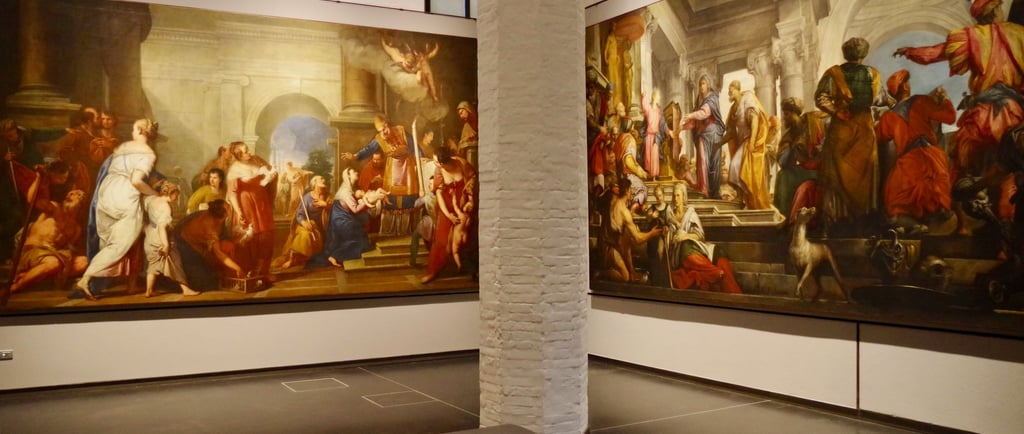

The Accademia Gallery is home to the world's largest collection of art from the Veneto region. Much of the collection came to reside here under sad circumstances: Under Napoleon's occupation of Venice many churches, monasteries, convents were suppressed, repurposed, or destroyed, and the precious art from those structures needed to be rehomed.
The museum is an quirky conglomeration of rooms and passageways because it's made up of a former monastery church and a scuola (like a religious confraternity), joined together to form the Gallery. Because of this, it doesn't have a "sterile" feel like some museums -- in fact, in many parts of the museum you can still see the original beautiful floors and ceilings.
The "Venetian School" of art emphasized color, natural light, and rich decoration, so be prepared to be "wowed" by an amazing assortment of breath-takingly beautiful works of art from the 1300s through the 1700s.
Here are ten masterpieces to look for -- and even if you bought an admission ticket to see just ONE of these, the cost would be well worth it!
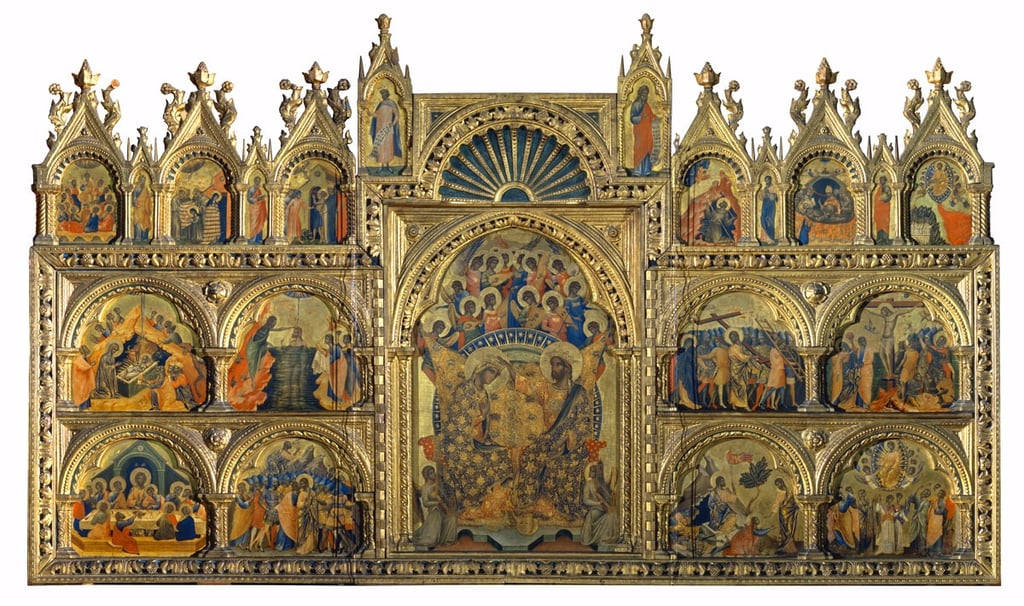

Paolo Veneziano's Santa Chiara Altarpiece, mid-1300's.
A massive, vividly-colorful triumph of medieval beauty, surrounded by an ornate gilded frame. Take your time with all the fabulous details in the narrative scenes.
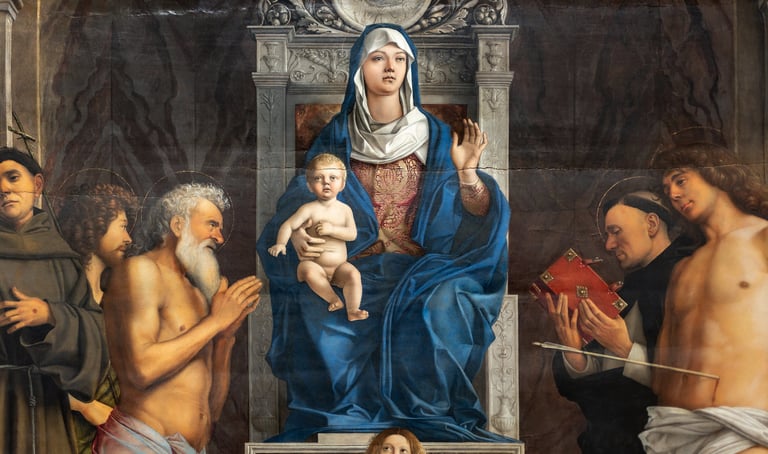

Giovanni Bellini's San Giobbe Altarpiece, c. 1487. Bellini was opening up a new path in religious art -- introducing a warm, personal realism while preserving the sacred intent.
Giovanni Bellini was considered the father of Venetian Renaissance painting.
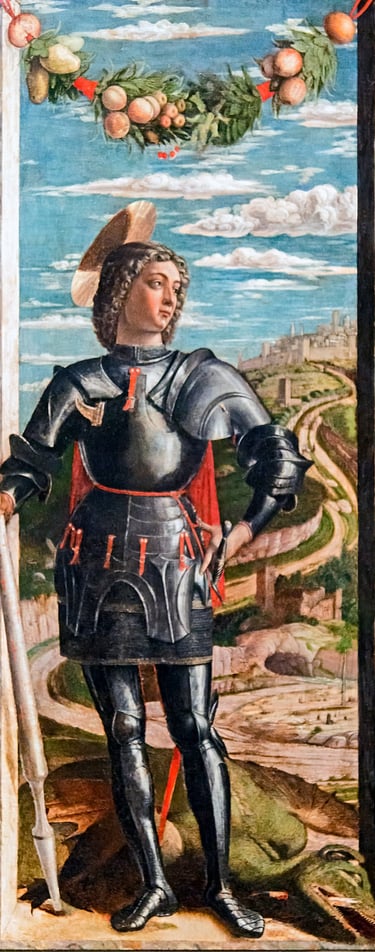

Andrea Mantegna's Saint George and the Dragon, c. 1460.
This is considered a masterpiece of the early Italian Renaissance. Saint George stands on a green dragon, looking quite pleased with himself.
Mantegna was Giovanni Bellini's friend and brother-in-law. Just imagine - two giants in Italian art in one family.
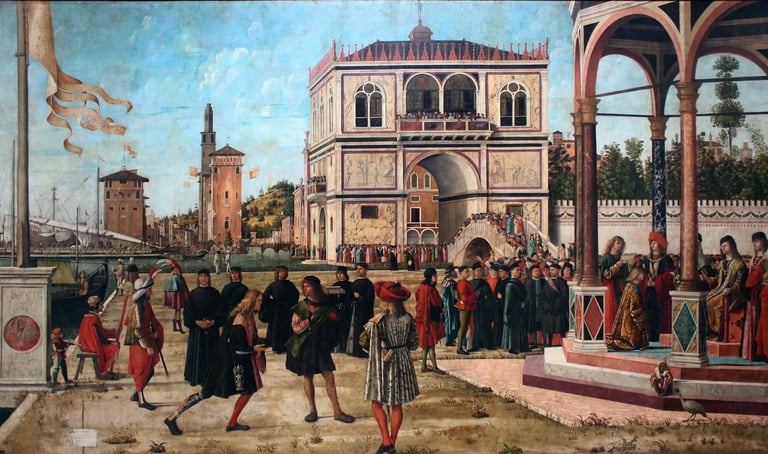

4. Vittore Carpaccio's famous cycle of paintings telling the story of Saint Ursula. These date from around 1495-1500. They're huge and contain lots of interesting details of Venetian life.
Carpaccio's specialty was telling stories with his pictures, but that doesn't detract from his enormous talent. They've recently undergone cleaning and conservation by Save Venice.
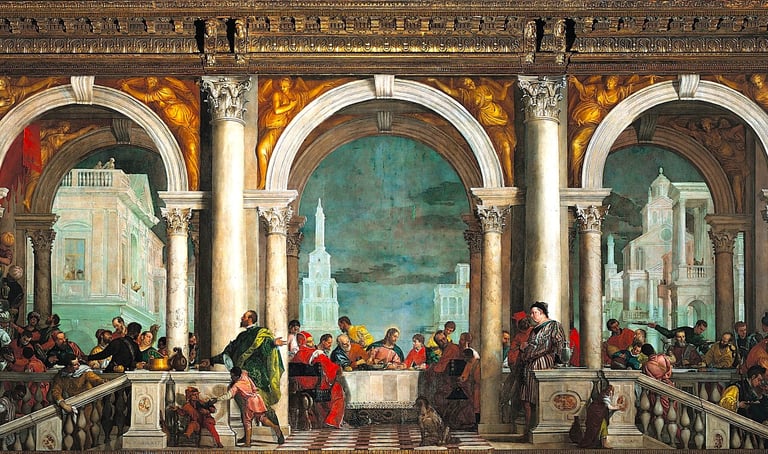

5. Paolo Veronese's enormous and magnificent Feast in the House of Levi, 1573.
Once again, we're presented with a massive painting filled with fabulous images. Every time I visit this painting, I head straight to the man in the green silk and velvet! The fabrics look real enough to touch. The architectural details, the people, the clothing, and all the "drama" taking place make this an intriguing prospect. I still discover something new each time I see it.
And speaking of drama, Veronese got called in by the Inquisition for this painting. It was originally titled The Last Supper, but the idea of partying, dogs, and (heaven forbid) Germans at such an event just didn't seem to align with the religious sensitivities at the time. The authorities "advised" Veronese to repaint it; however, he opted to just change the name.
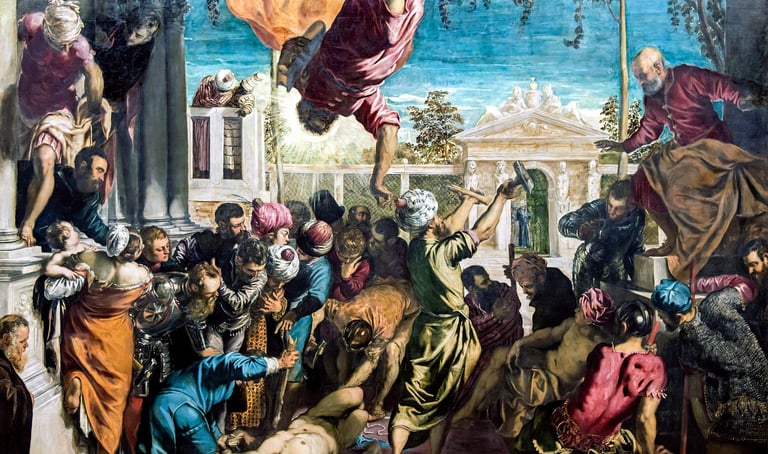

6. Tintoretto's Miracle of the Slave, c. 1548.
This is a fabulous work by a true hometown Venetian. Be sure to read the story that's taking place in the painting -- I believe it's on the placard next to it. If not, you can Google it later. (Again, a huge painting.)
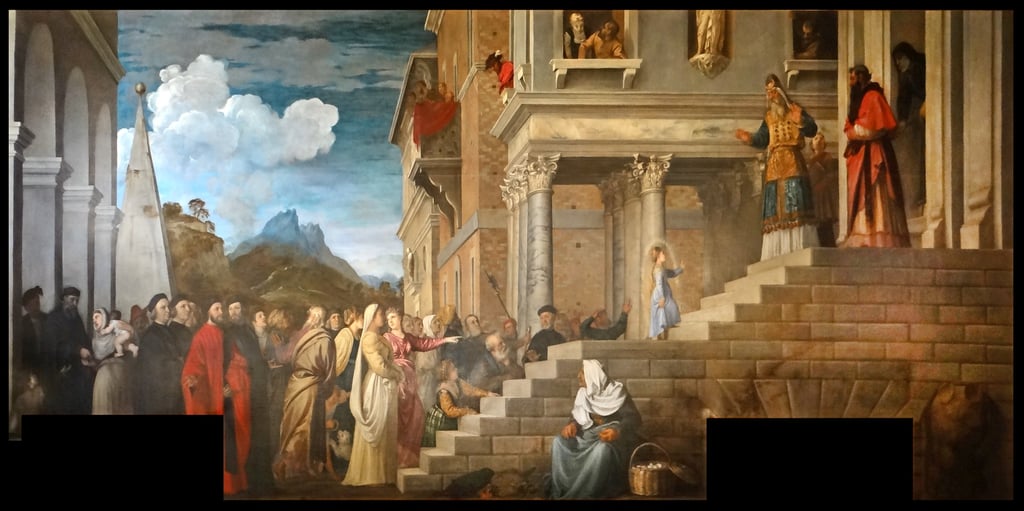

7. Titian's Presentation of Mary, c. 1535-38.
Literally part of the building, this is painted on a wall that was once a meeting room of the former scuola. At the bottom left you can see where an additional doorway has been cut into it. This is one of Titian's best works, in my opinion.
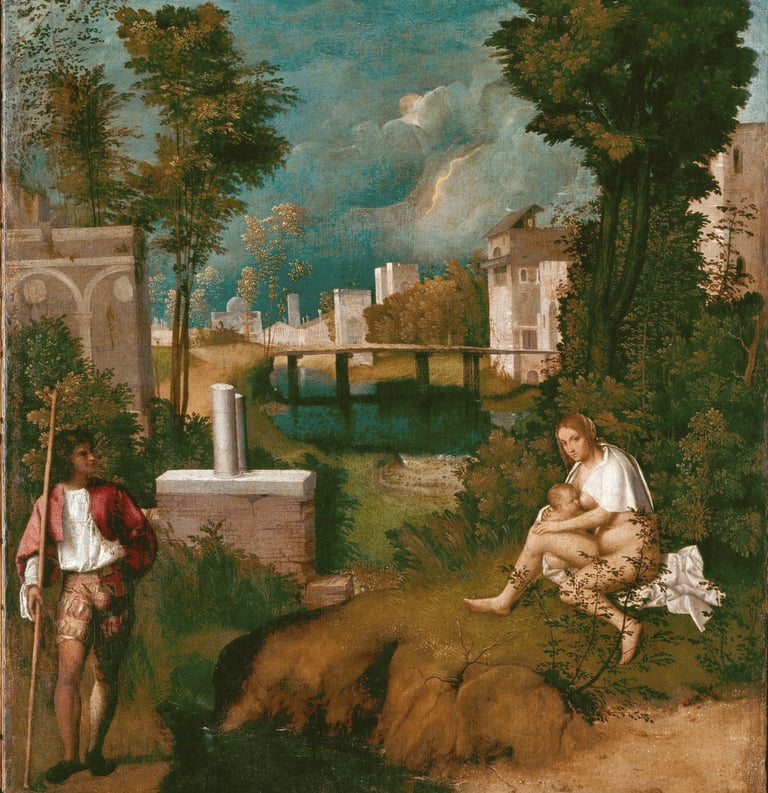

8.Giorgione's The Tempest, c. 15o4.
Interestingly, this isn't very large. But it is so much more beautiful in person. For centuries, scholars have tried to discover the meaning of this enigmatic painting. It remains a mystery . . .
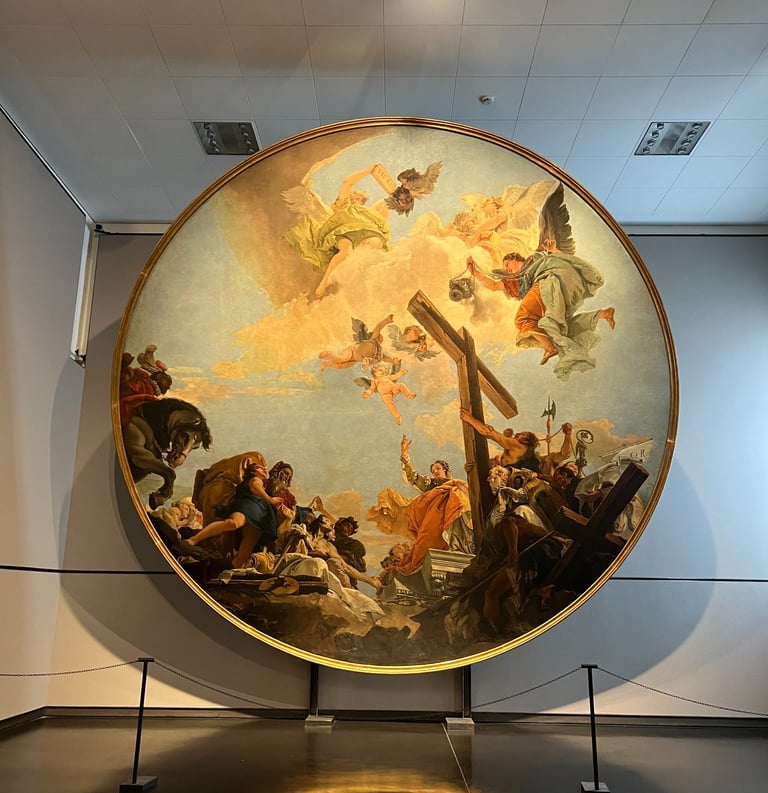

9. Tiepolo's Feast of the Cross and Saint Helen, c. 1745.
Tiepolo was and is famous for painting beautiful ceilings.
This once graced the ceiling of a church in Venice. The soft yet vivid colors and the unusual perspective, as if we're looking up from below, make this a treat to gaze at. And, it offers a rare opportunity to have an up-close look at one of Tiepolo's ceiling paintings.
(A painting that isn't included in this list because it's just too big to get a good photo of, but one you don't want to miss is Tiepolo's Scourge of the Snakes, c. 1732-34 -- usually in the same room as Feast of the Cross and Saint Helen. Trust me, it's fantastically beautiful.)
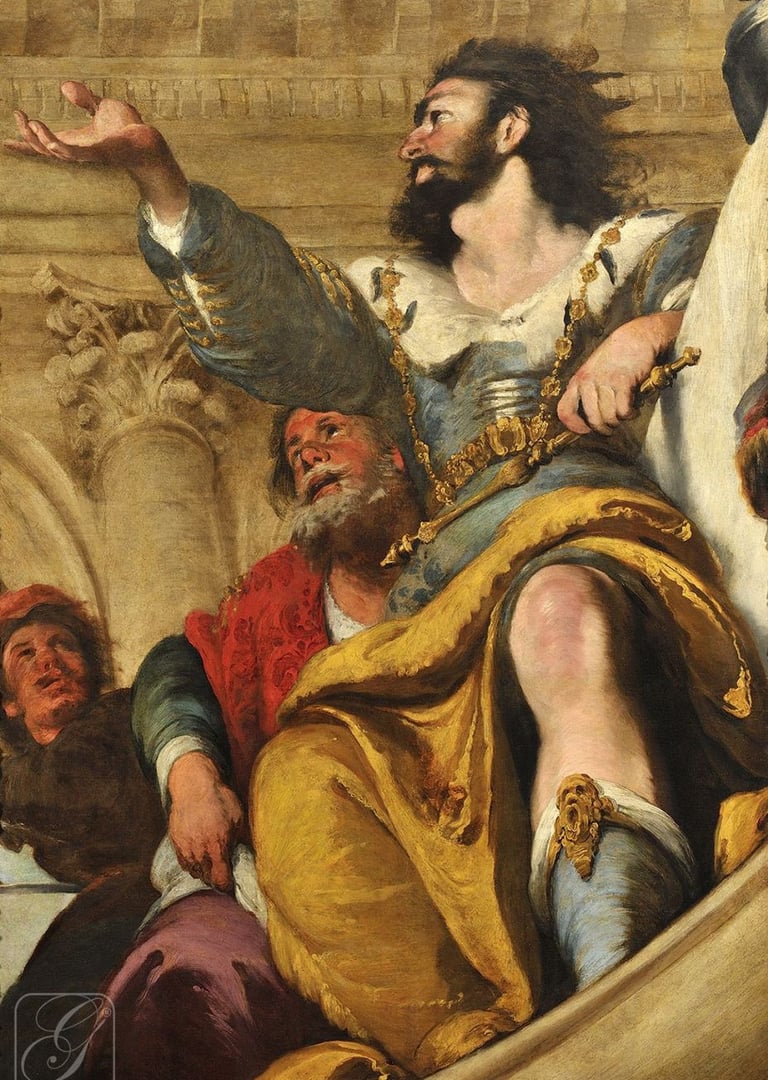

10. A fragment from Bernardo Strozzi's Parable of the Wedding Banquet, c. 1636.
This is just one surviving piece of a much larger work, and I can barely imagine how impressive this would have been when the whole thing was intact.
If you're thinking the unusual perspective makes it look like it should be on a ceiling, you're right. It was part of a ceiling decoration for the Ospedale degli Incurabili (Hospital for the Incurables) in Venice.
Good times to visit: Rainy days when you want to be indoors, and afternoons when crowds are thick. Enjoy - it will be worth every euro!
